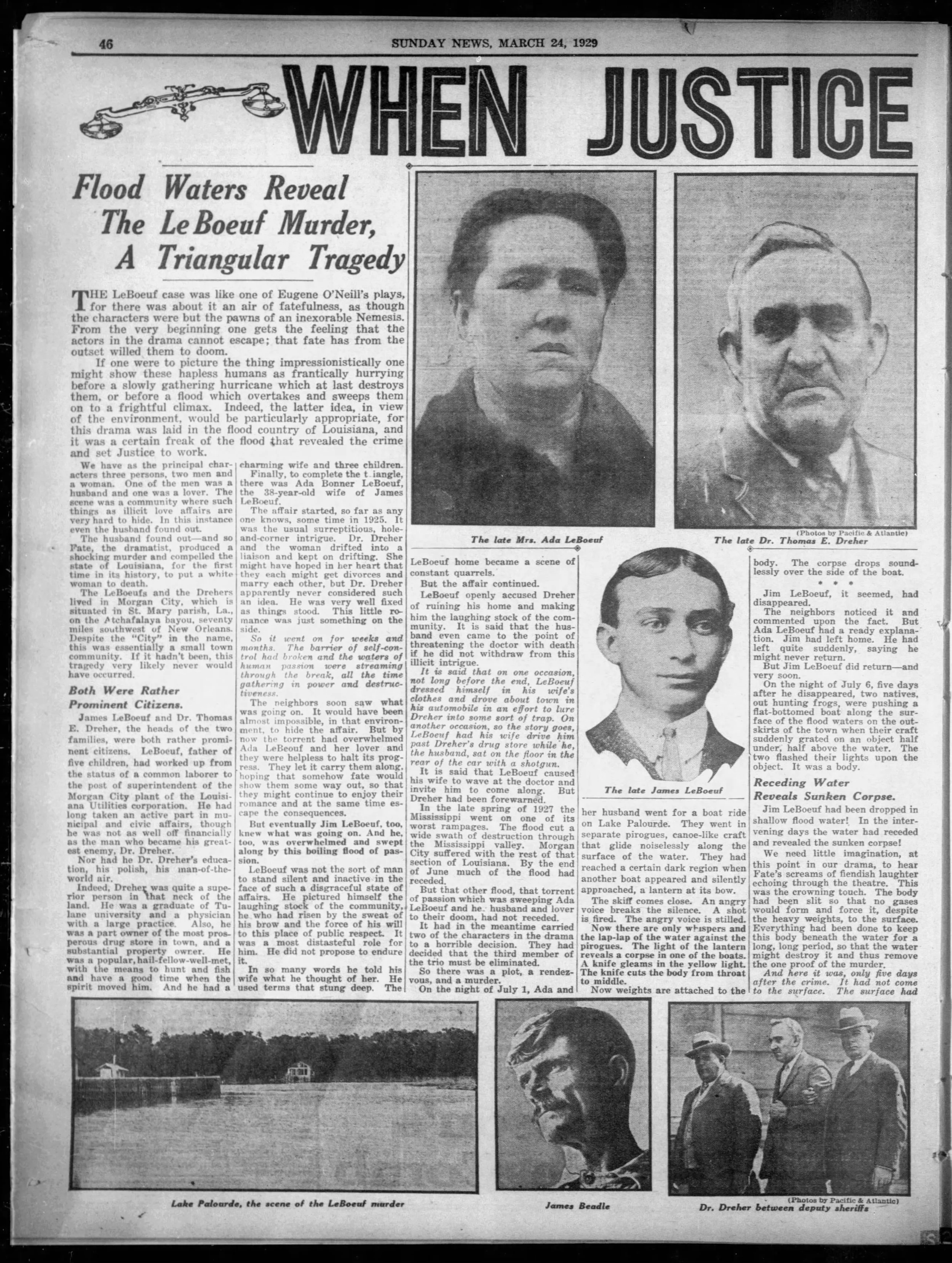In 1927 southern Louisiana, Ada LeBoeuf and her alleged lover face trial for her husband’s grisly murder, igniting the most explosive sex-murder trial ever reported.
Set in 1927 in the sweltering bayou town of Morgan City, Louisiana, Ada and the Doc tells the true story of Ada LeBoeuf, a housewife trapped in an abusive marriage who becomes entangled in one of the South’s most infamous murder trials. When her husband Jim’s mutilated body is discovered in Lake Palourde, suspicion soon falls on Ada and her longtime friend, Dr. Thomas Dreher, amid rumors of an affair whispered through their close-knit community.
As the investigation unfolds, tensions erupt after an anonymous letter exposes Ada’s alleged relationship. Confrontation at home turns violent, and Dreher confides in his associate, James Beadle, who volunteers to “take care of” Jim. On July 6, 1927, Jim is lured to the lake and shot, his weighted body dumped but quickly discovered. Under interrogation, both Ada and Dreher break down, admitting pieces of the plot. Public outrage intensifies, especially toward Ada, whose role as an unfaithful wife overshadows her years of abuse.
The trial becomes a spectacle, with Ada, Dreher, and Beadle tried together and convicted despite weak evidence and prejudice. In the end, Ada is sentenced to death, becoming the first woman executed by the state of Louisiana under Governor Huey P. Long—a tragic figure condemned as much by her community’s patriarchal judgment as by the crime itself.







